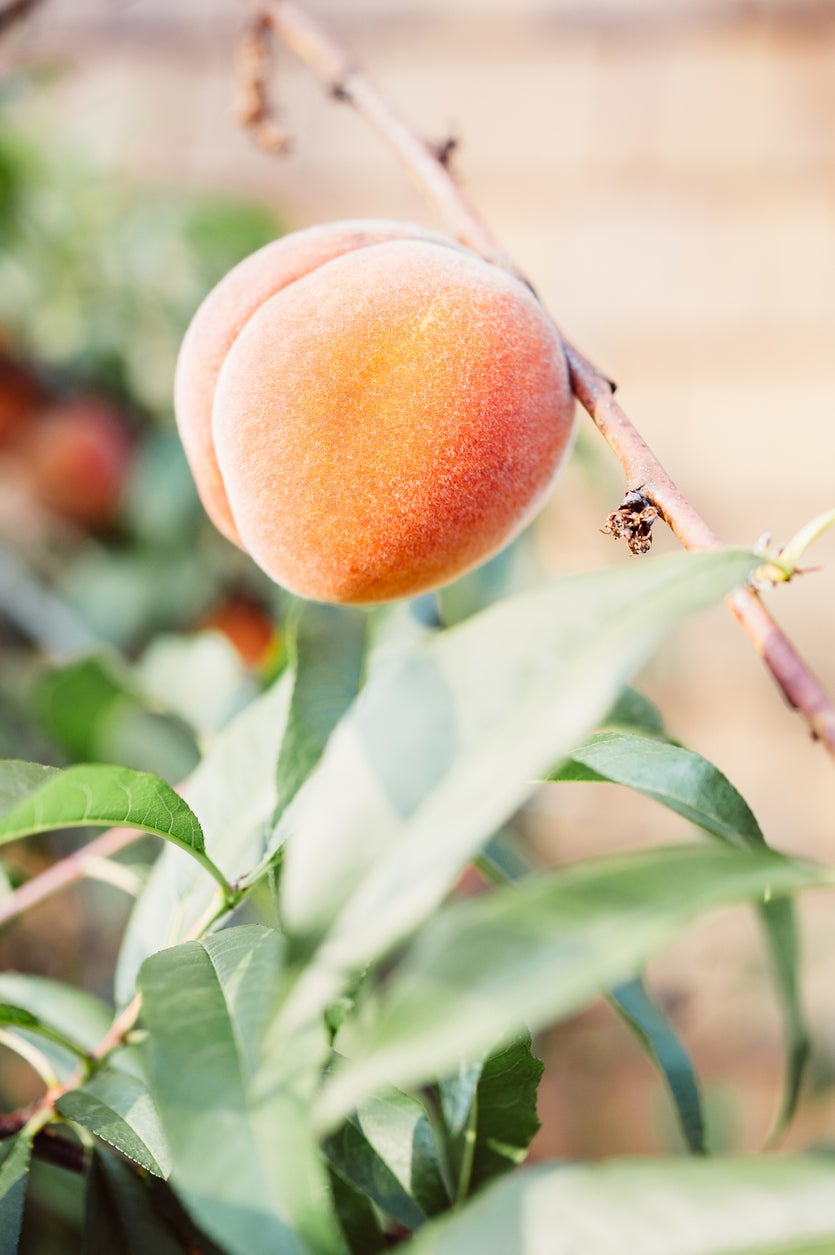Intrepid Peach Care – How To Grow An Intrepid Peach Tree Variety


The scent and flavor of a ripe peach are unparalleled summer treats. Whether you like them eaten out of hand, sliced over a bowl of ice cream, or baked into a cobbler, Intrepid peaches will provide you with a glorious fruit. What is an Intrepid peach? It has been around for a few decades and is characterized by its ability to retain flower buds even in cold snaps. The fruit is the real showstopper, with large peach crops and sweet flavor.
What is an Intrepid Peach?
Merriam Webster defines the word intrepid as, “characterized by resolute fearlessness, fortitude, and endurance.” That surely describes Intrepid peach trees. The Intrepid peach tree variety not only has stoic blossoms in the face of cold temperatures but also has resistance to bacterial spot. It’s a really great patented variety of peach for most suitable regions.
The Intrepid peach tree variety was introduced in 2002 out of North Carolina State University. The tree is hardy to -20 degrees Fahrenheit (-29 C.). The fruit is freestone and requires up to 1,050 chill hours, so the tree is suited for the cooler USDA zones 4 to7.
The peaches are large and reddish-pink when ripe with yellow flesh, very juicy and sweet. They are recommended for canning, cooking, and freezing, as well as fresh eating. The pink flowers appear in late spring but can withstand any surprise freezes without aborting blooms.
Growing Intrepid Peaches
Intrepid peach trees need a full sun location in loose, loamy soil. The tree is self-fruiting and does not need a pollinator. If you are planting multiple plants, space standard trees at least 15 feet (4.5 m.) and dwarf plants 10 feet (3 m.) apart.
If purchased plants already exhibit greening, harden them off for a week before planting outdoors. Bare root plants should have the roots soaked for up to two hours. Dig the hole twice as wide and deep as the roots and spread these out at the bottom. Make sure the graft scar is above the soil. Backfill completely, watering in well to pack the soil.
Intrepid Peach Care
Growing Intrepid peaches is a breeze compared to some fruit trees. Use organic mulch around the root zone to prevent weeds and conserve moisture.
Gardening tips, videos, info and more delivered right to your inbox!
Sign up for the Gardening Know How newsletter today and receive a free copy of our e-book "How to Grow Delicious Tomatoes".
Begin a fertilizing program as soon as trees begin to bear fruit, between 2 and 4 years of age. Apply a high nitrogen fertilizer in spring and a balanced food up until the first of July.
Water the tree deeply and consistently but don’t keep the soil soggy. Train the tree to an open shape with annual light pruning. This will help prevent fungal issues and allow light to penetrate into the canopy and assist production and ripening.
Pick peaches when they have a bright red blush on them and just a touch of give.

Bonnie Grant is a professional landscaper with a Certification in Urban Gardening. She has been gardening and writing for 15 years. A former professional chef, she has a passion for edible landscaping.
-
 ‘Coral Charm’ Peony Care For Sublime Semi-Double Peonies With Lush Salmon Pink Flowers
‘Coral Charm’ Peony Care For Sublime Semi-Double Peonies With Lush Salmon Pink FlowersPeonies are known for their soft baby pink or magenta tones, but if plushy coral blooms are your thing, here’s our guide to the ultimate ‘Coral Charm’ peony care
By Tonya Barnett
-
 How To Grow Seeds Quickly: 8 Expert Tricks For Fast Flowers & Crops
How To Grow Seeds Quickly: 8 Expert Tricks For Fast Flowers & CropsIt's never too late to start growing! Jump-start your flower or vegetable garden with these pro tips and tricks for germinating seeds in record time.
By Amy Grant